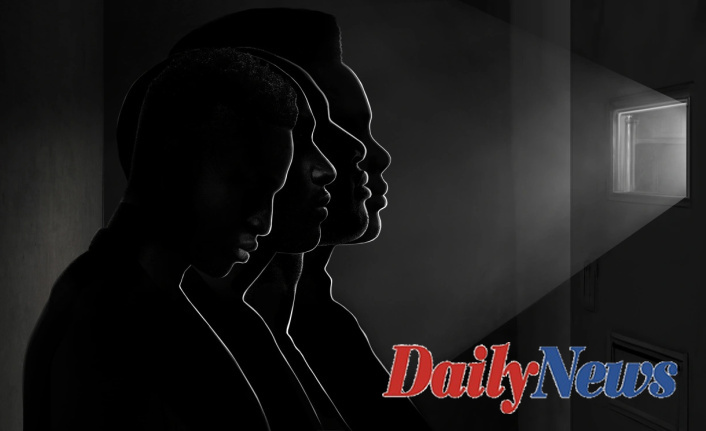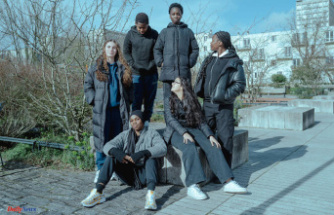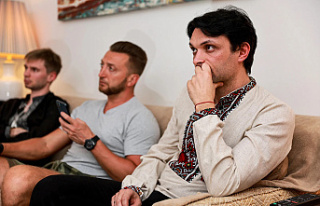ST. MARTINVILLE, La. ST. MARTINVILLE, La. -- Last October, lawyers and a judge met in an East Baton Rouge juvenile courtroom to discuss the case of a teenager who was caught joyriding in a stolen vehicle. A screen was shown with the teen and a caseworker, who shocked everyone by explaining what conditions he was in.
The 15-year old was kept in solitary confinement round-the-clock. Two defense attorneys were present to say that he was not receiving any education and was not getting court-ordered substance abuse counseling. The Acadiana Center for Youth in St. Martinville was the only facility that Louisiana's Office of Juvenile Justice held him.
Jack Harrison, one of the lawyers, stated that it was like a secret prison had been open up. "I could see the judge's face shock and real anger -- visceral anguish."
They didn't know how terrible it was.
State officials opened the high security lockup to regain control over the most troubled teenagers in their care last summer, after they failed to respond to a surge of violence and escapes from other juvenile facilities. According to dozens of interviews and photo and video footage, as well as hundreds of pages of emergency response logs, emails, and incident reports, the state officials created a powder keg instead.
Louisiana policy does not allow youths to be in solitary confinement. Many other states have put strict limits on this because of the psychological harm it causes. Teens in this facility with serious mental illnesses were kept alone for up to 23 hours per day, for several weeks. When they got out to shower, they were tied with handcuffs or leg irons. They were also given meals that were placed in slots on their doors. Some teens used those few moments of contact with humans to throw their urine and feces at the guards.
Two teens from the facility were so injured that they needed medical attention. They destroyed their beds and broke light fixtures.
After a night of banging on walls, a guard said that he became frustrated by the situation and refused to return to the pod. She wrote that her supervisor advised her to keep the doors locked in case anyone escapes, noting that there were only two female workers. He also said that he didn't check the cells as he didn't have the manpower.
According to incident reports obtained by a public records request, guards responded to violence-related offenses on several occasions. Three men slammed the doors of teens' hands. One of them struck a boy on the knee and fired pepper spray into his cell, leaving him vomiting and coughing.
Mark Soler, the executive director of the Center for Children's Law and Policy said, "This is child abuse." Soler was previously a member of a Louisiana task force reviewing the care in the state's juvenile facilities. It is outrageous that children are kept in rooms for long periods of time and then locked up in their rooms when they leave. It is cruel and unacceptable to children.
Carmen Daugherty is the policy director of Youth First Initiative. This advocacy group aims to end youth incarceration. She called the conditions at St. Martinville "egregious."
She said, "It's almost like you just put all the things we talk about and put them in one facility."
The U.S. juvenile justice system has seen a lot of change in the last 20 years. Nearly every state has reduced the number of young people incarcerated by half or more. All but the most serious crimes have been able to benefit from community programs, therapy, probation and therapy. However, as more children are being locked up by states, many of these states are finding it difficult to care for those left behind. This is because they have fewer resources available, and the majority of them are disproportionately Black and face complex social and psychological issues.
Candice Jones, a former director of juvenile justice for Illinois, stated that some states have "wrapped them pretty tight" with therapy and education. Many states have failed to provide the best programs and services. The U.S. Department of Justice investigated abuses in juvenile facilities in Texas, South Carolina, and other places in recent years. These included the use of restraints and solitary confinement, as well as insufficient education and rehabilitation.
Michele Deitch, a University of Texas juvenile justice expert, said that "story after story" from the juvenile system shows that agencies across the country aren't equipped to handle the most difficult youth. "They are just throwing their hands up and saying, 'We've exhausted all our options. "We don't know where to turn."
Louisiana has 350 youths in secure facilities, with more than 80 percent being Black. It has promised over the decades to shift its lockups towards a more therapeutic model. It has failed, like other states, to fully fund and commit to the new model. This, along with the high turnover of staff due to low pay and hazardous conditions has resulted in staff not being properly trained to stop the violence as well as the chaos that has erupted.
St. Martinville was created to serve as a "transitional unit" for youth who are unable or unwilling to stop violent and aggressive behavior, according to Beth Touchett-Morgan, Office of Judiciary Justice spokesperson.
She said that 21 of the 31 teens transferred to St. Martinville since its opening for behavioral reasons have been "returned to other facilities successfully". Louisiana sent more than 50 teenagers to St. Martinville in Covid quarantine. Although staff tries to minimize situations that require physical intervention, some may still be required to ensure safety. Although she did not speak on specific incidents, she stated that the department reviewed all incidents and held staff accountable for violating policy. This can lead to them being disciplined and sometimes even requiring additional training. Staff members claimed they were not allowed to speak to the media and that the agency refused to allow reporters to tour the facility.
Perry Stagg was the Assistant Secretary of the Office of Juvenile Justice. He confirmed that St. Martinville didn't initially offer education, but denied claims by teens and their lawyers, that detained youths were confined for long periods of time and kept in chains when they left their cells. He said that the policy of the agency is to allow youths to roam free from their cells unless they are disruptive or violent. Stagg stated that St. Martinville provides substance abuse counseling and recreation. He suggested that teens who claimed they were not allowed to use these services are either lying or having opted out.
He said, "It's up the child to take part." "We cannot force them to participate but it is absolutely possible."
Although conditions have improved over the last months with some teens being allowed to leave their cells during the day and English and math instruction being offered, the facility still provides less education than required by law. According to state records and the attorneys, youths remain chained when they leave their cells.
Some of the young men in St. Martinville were convicted of serious crimes. The stories of the eight were shared with ProPublica and The Marshall Project as well as NBC News. They include young men who stole cars and guns and escaped multiple lockups. One teenager broke the arm of a guard in a fight at an earlier facility.
The juvenile justice system, unlike adult prisons isn't designed to punish youths who violate the law. Its goal is to empower them to live productive lives. Experts and advocates believe this is particularly important, as Black youths are already significantly overrepresented in every stage of the criminal justice system.
Amy Borror, an analyst with the Gault Center (a nonprofit juvenile justice organization), said that "these are still children." They're afraid, they are mad, they don't understand, and they are far from their families. A department of juvenile justice should be able to help them. They exist because of that. This is their job.
"Born out necessity"
Louisiana is known as the lockup capital in the world. It relies heavily on solitary detention for both teens and adults. Officials know that punitive juvenile detention is not a viable option. In the late 1990s, the U.S. Justice Department sued Louisiana, citing concerns about physical abuse, excessive use of handcuffs, and solitary confinement.
After a series reforms and promises by others, the federal government dropped the suit. The rollout was delayed by aggressive Budget cuts. Furthermore, the Office of Judgment Justice continues to have difficulty recruiting Correctional Workers, who are paid less that $27,000 per year. Experts and officials say it has been difficult to hire staff because they don't have the training required to work with troubled teens and leave soon after. It is now clear that the state has made significant strides since those detained teens showed up at hospitals with broken jaws and fingers, but its detention centers still see hundreds upon of fights every year . Pandemic-related lockdowns, isolation and frayed nerves further stressed resources.
Louisiana officials were again under scrutiny after two teenagers committed suicide in solitary confinement at Ware's youth facility. In May , a legislative committee asked its auditor for an investigation into the use of solitary within state facilities. That investigation is still ongoing.
The current state policy limits the use of solitary confinement to for 12 hours in most cases and seven days for " highly disruptive" behaviors. The American Medical Association and the American Academy of Pediatrics all condemn the practice of isolating youth as deeply damaging. This can lead to anxiety, depression, and psychosis. Research shows that the majority of suicide children who are locked up in prisons are or were in isolation.
At least 24 states have placed strict limits on the practice of solitary confinement in youth custody. In at least 12 cases involving juvenile justice agencies from the state and local levels, the U.S. Department of Justice has intervened to clarify that solitary confinement is not constitutional.
Education still falls short of the state law which requires six hours per day. Two teens were held in St. Martinville last winter by advocates and attorneys. One had only one lesson with his teacher, while the other received 45 minutes of instruction online each day. The counselor was not available for the first two weeks. One counselor saw him for about half an hour per week.
Stagg stated that officials trying to bring education in St. Martinville ran into staffing problems due to a tight labor market. In January, his agency settled the education matter and agreed to employ an independent monitor to watch instruction and give advocates biweekly updates about compliance with federal and state education laws.
Mid-January's update revealed that a teacher was providing two hours of instruction per day in English language arts and math. The teacher, an 84 year-old retired educator, ended that arrangement. He was taken on medical leave at January's end. Although the agency claims it made every effort to find a replacement teacher, he had not yet been hired. Education updates have also highlighted that teens are refusing to take part, staff shortages, and technical problems have all contributed to the limited instruction.
According to incident reports, solitary confinement was less common towards the end of the year. However, shackling and some isolation were still used amid fights and assaults. One guard was left bleeding from the head in December after an incident. In January, two teens ran away and two more fled in February. One managed to smuggle in a gun. According to incident reports and other internal documents, teens began to go to classes and to watch movies outside by late fall.
Parents and lawyers said that the teens were unable to engage and receive meaningful treatment. After being caught with a stolen car, Rebecca McDonald's 16 year-old son is now in state custody. For the better part of one year, he was in juvenile jails and residential facilities before he ended up in St. Martinville. She said that he told her that 'I'm not getting any mental stimulation. I can't even speak to you. I'm going crazy."
He was involved in a St. Martinville escape that led to him being charged with new charges. He claimed that officials had stopped letting him leave his cell after that. According to his mother, he was in solitary confinement since February.
"He needs to be supported mentally. He should have access to a school that will help him learn so he can do something. McDonald's advised that you don't "fend for your own" He's 16 years of age, and he's been through a lot. He needs someone who will guide him in the right direction. ... They won't learn anything if they don't give them any other lessons."
Christina Stephens, the spokesperson for the governor, stated that St. Martinville's conditions are a concern. She said that the state agencies have the same staffing problems as other employers and that she is concerned about the safety of the youth and the treatment of staff.
New Orleans Democrat State Rep. Royce Duplessis chairs the juvenile justice oversight board. He stated: "Clearly these facilities lack resources. They're undermanned."
He said, "We must make sure that the guards get paid and these facilities are not for kids who want to tear up the guards and be destructive."












